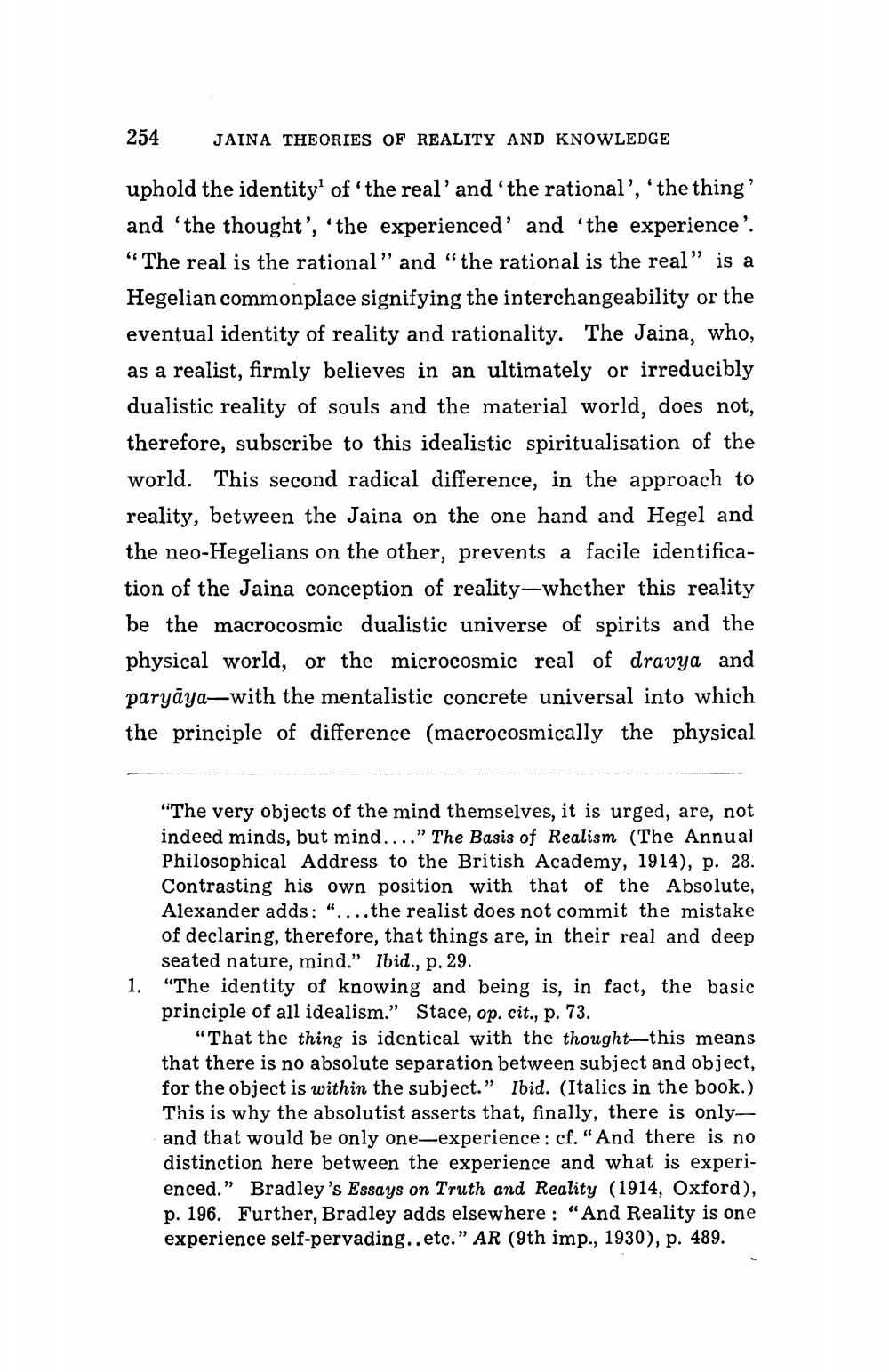________________
254
JAINA THEORIES OF REALITY AND KNOWLEDGE
uphold the identity of the real' and 'the rational', 'the thing' and 'the thought', 'the experienced' and 'the experience'. “The real is the rational" and "the rational is the real” is a Hegelian commonplace signifying the interchangeability or the eventual identity of reality and rationality. The Jaina, who, as a realist, firmly believes in an ultimately or irreducibly dualistic reality of souls and the material world, does not, therefore, subscribe to this idealistic spiritualisation of the world. This second radical difference, in the approach to reality, between the Jaina on the one hand and Hegel and the neo-Hegelians on the other, prevents a facile identification of the Jaina conception of reality-whether this reality be the macrocosmic dualistic universe of spirits and the physical world, or the microcosmic real of dravya and paryāya—with the mentalistic concrete universal into which the principle of difference (macrocosmically the physical
"The very objects of the mind themselves, it is urged, are, not indeed minds, but mind...." The Basis of Realism (The Annual Philosophical Address to the British Academy, 1914), p. 28. Contrasting his own position with that of the Absolute, Alexander adds: “.... the realist does not commit the mistake of declaring, therefore, that things are, in their real and deep seated nature, mind." Ibid., p. 29. "The identity of knowing and being is, in fact, the basic principle of all idealism.” Stace, op. cit., p. 73.
“That the thing is identical with the thought—this means that there is no absolute separation between subject and object, for the object is within the subject.” Ibid. (Italics in the book.) This is why the absolutist asserts that, finally, there is onlyand that would be only one-experience: cf. "And there is no distinction here between the experience and what is experienced.” Bradley's Essays on Truth and Reality (1914, Oxford), p. 196. Further, Bradley adds elsewhere : "And Reality is one experience self-pervading..etc." AR (9th imp., 1930), p. 489.




